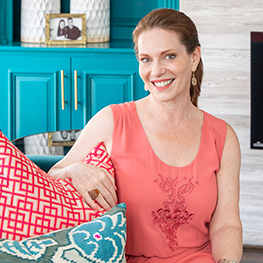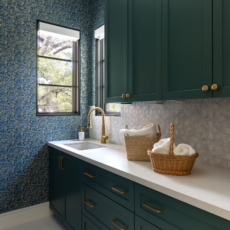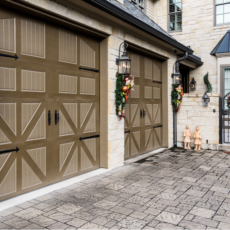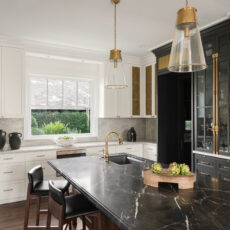Refresh the Look of Your Walls With Paint, Wallpaper, Cladding, and Millwork
At Pamela Hope Designs, we love getting creative with design upgrades and mediums. If you’re starting to think about 2025 design updates for your space, we encourage you to first take a look at what might be the biggest blank canvas in your home—your walls. By changing how you treat your walls, you can completely transform your entire home’s look and feel. Let’s take a closer look at four different types of popular wall treatments interior designers always have in their back pockets.
First, Let’s Talk About Color
One of the most powerful design tools in interior design is color! Remember, the same hue can look different from one room to another, depending on the decor, aesthetic, and items around it. You may not notice the color changing drastically, but it does change subtly. Pay attention to lighting, too. Colors take on a different persona during the daytime and at nighttime, and people view color differently as well. When selecting a new paint color or wall treatment, pay attention to how it looks in the space during different times of the day and if any of your decor items change your perception of the shade.
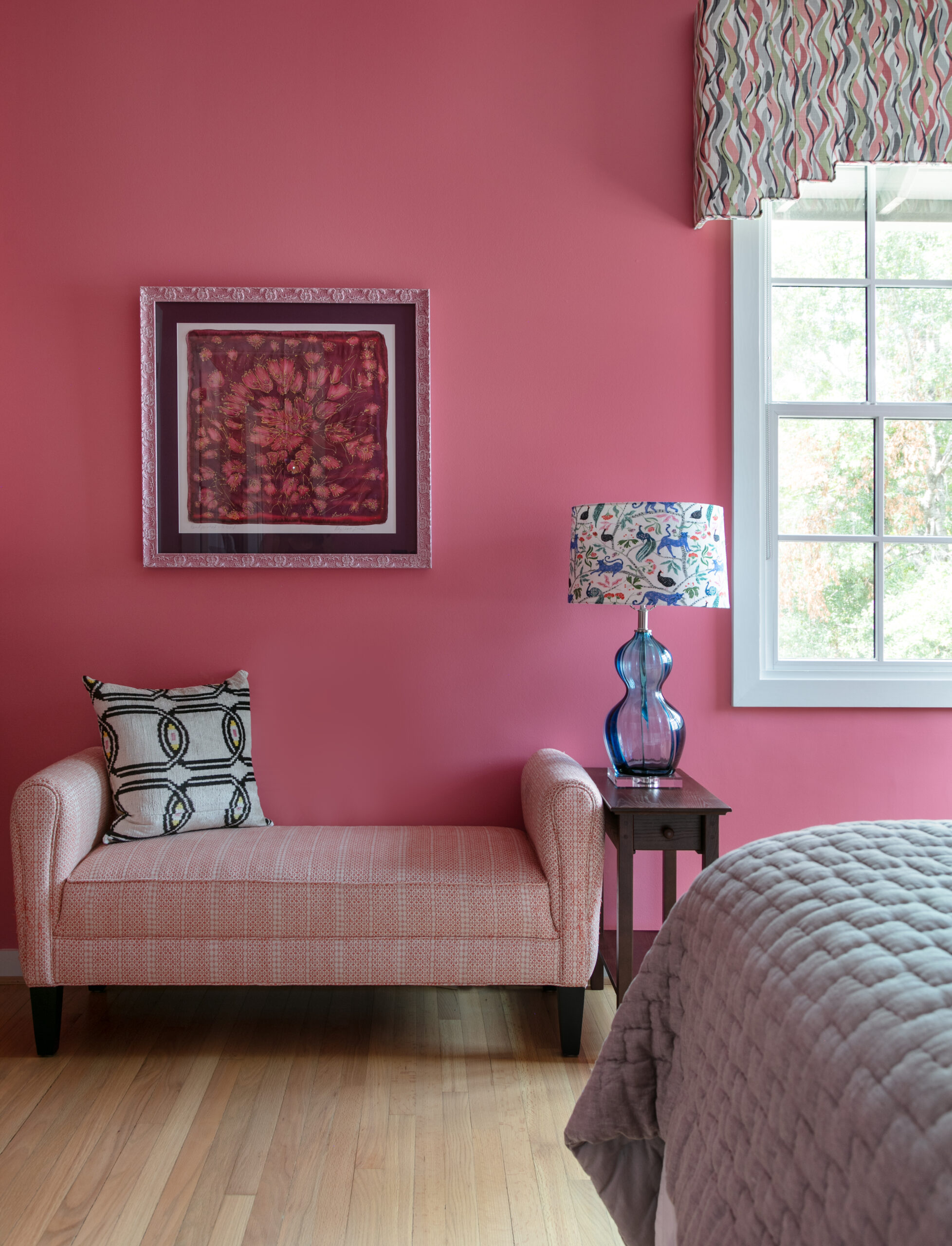
Are there “wrong” colors out there to avoid? The short answer is no. What can be wrong, though, is the amount or intensity of a color in a particular space. There are countless color combinations that can be achieved, and we, as designers, need to know how to manipulate those combinations to create beautiful spaces for our clients.
The walls in our homes act as partitions that define spaces. They define our living rooms, dining rooms, kitchens, and more, but they can also be used as decorative elements. Let’s take a look at a few ways to create eye-catching rooms in our homes by incorporating color on our walls.
The Top Four Types of Wall Treatments Interior Designers Love to Use
Let’s take a look at four popular wall treatment options our Houston interior design team uses in our projects.
1. Paint
While it is not “technically” a wall treatment, paint is one of the most widely used finishes for walls. It is the least expensive and easiest way to change the look of a room. There are infinite color ranges and finishes to choose from in today’s paint world. The best part about paint is that it can easily be changed if you change your mind.
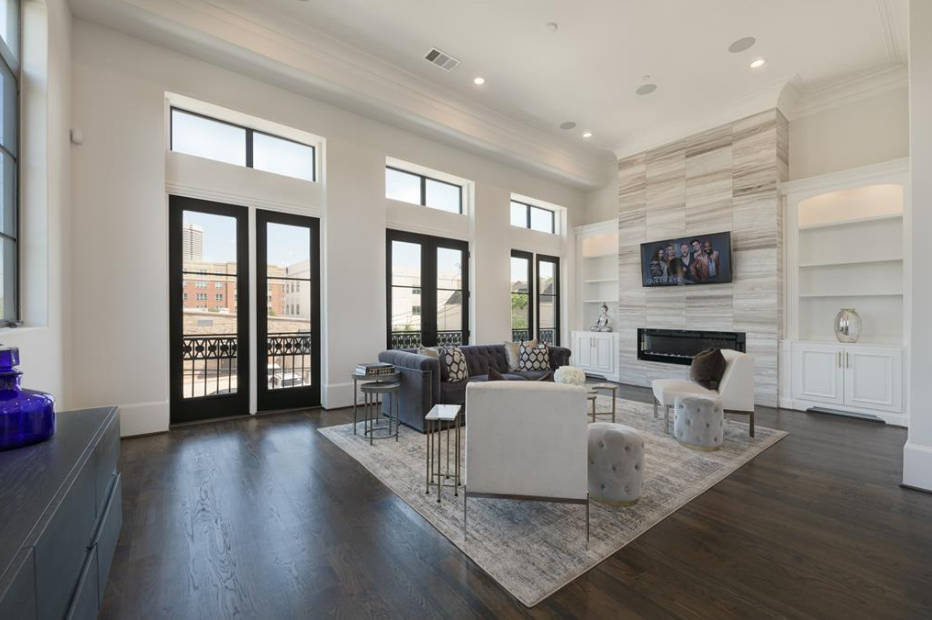
White Bookshelves Before We Painted Them

After!
Types of Paint
There are many different types of paint. Paint is either latex (water based) or oil (alkyd-based). Latex paint with a binder that is 100 percent acrylic is the highest quality. They are known for their stain resistance and durability. Oil takes a really long time to dry and has a strong odor with high VOCs (Volatile Organic Compounds). So while the slow dry time gives a hard, smooth finish, it can create environmental concerns. Paint is available in different finishes as well. We typically use a flat finish for the ceilings, eggshell for the walls, and satin for the trim. Satin paint has a slight sheen and is the easiest to clean, which is why our team and our clients love to use it for the trim. It helps with cleaning up any hand or fingerprints on the trim and keeps the door looking nice and fresh.
2. Wallpaper
Wallpaper is the most common wall treatment aside from paint. It has come back strong over the years, and we love to use wallpaper. We use it in powder rooms for excitement or behind bookshelves to make client accessories pop. It can make a world of difference in a room, much more so than paint. Wallpaper can also add a dimensional effect to our walls.
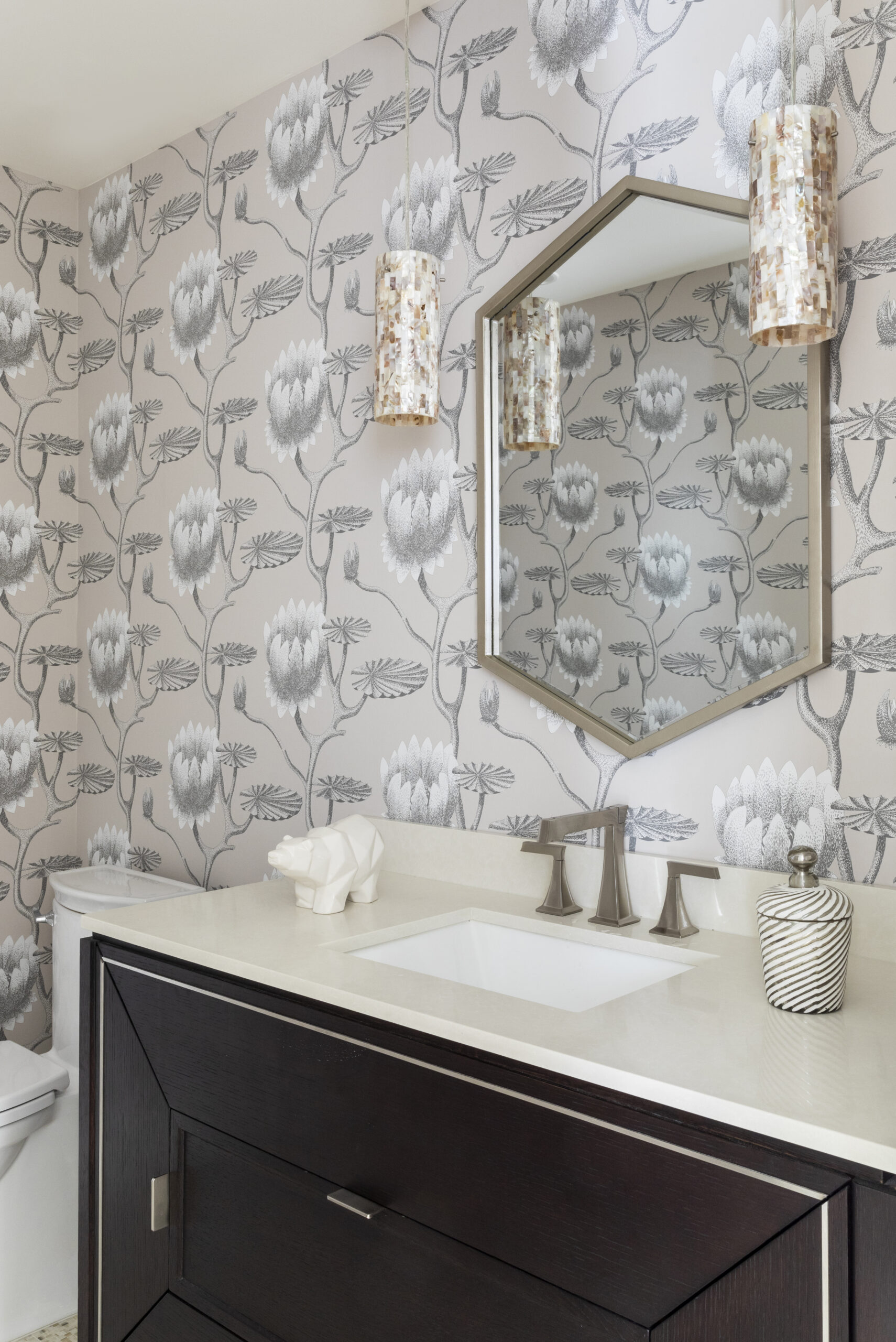
A Brief History of Wallpaper
Although it is difficult to say exactly when the first wallpaper was made, records state it was first used in China as early as 200 B.C. The first Chinese wallpapers were of birds, flowers, and landscapes painted on rice paper. In the 16th century, wallpaper was imported to Europe from China. At that time, wallpaper was made in rectangular sections (about 12” by 18”).
Around 1620, a method of imitating cut velvet was introduced in Europe. Papers made this way became known as flocks. This was done by shaking silk or woodpile on a design that had been glued or varnished. The demand for wallpaper grew rapidly in Europe, and wallpaper manufacturing became a recognized trade.
Today, there are endless wallpaper designs to choose from, including repeating patterns, textures like grasscloth, and scenic mural prints. Wallpaper could be used on one accent wall in a space or envelope an entire room for a dramatic effect.
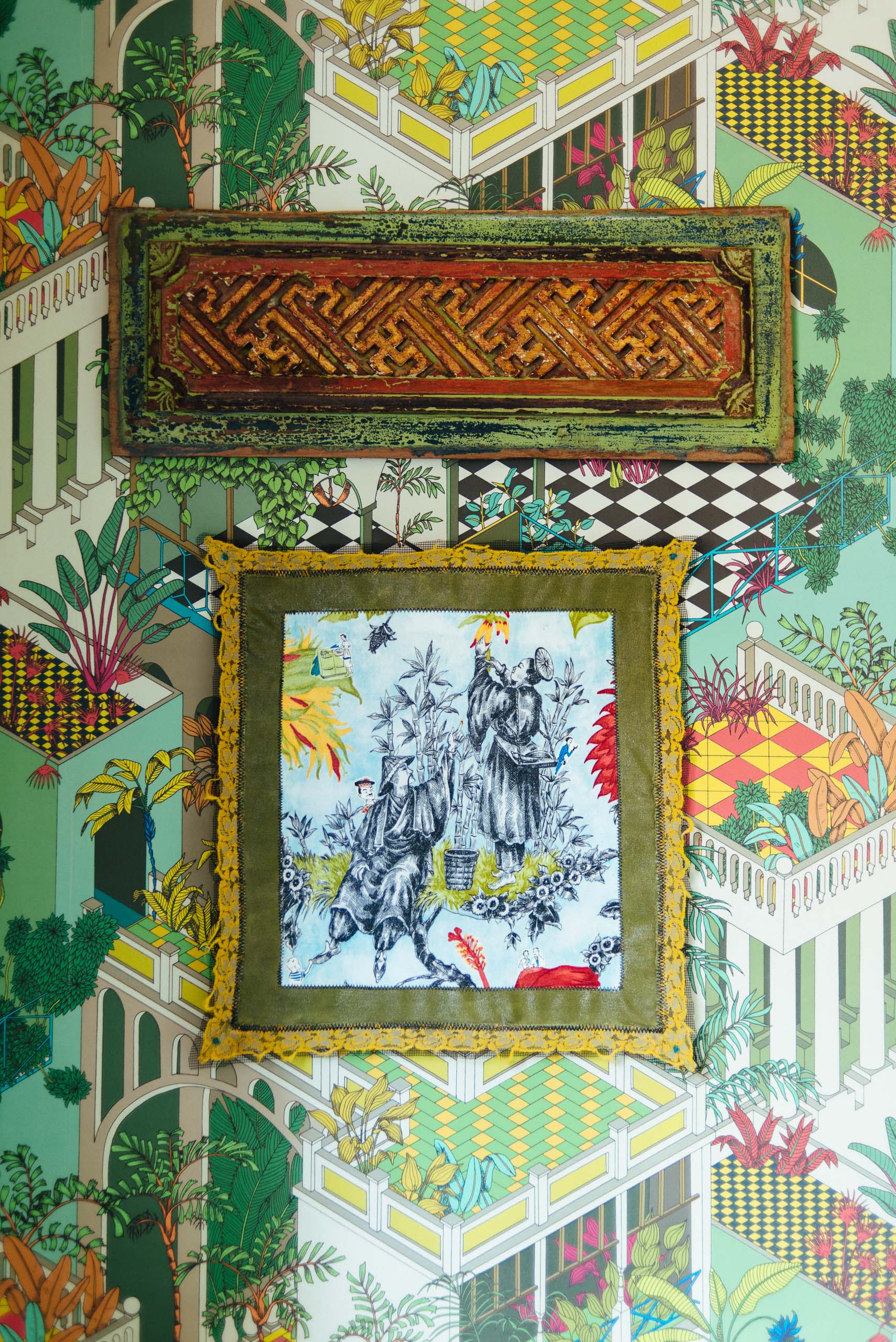
Cost of Wallpaper
The cost of wallpaper can vary widely from approximately $150-$500 a roll. Certain papers are available as single rolls or double rolls, consisting of four or eight yards per roll. Some are available in Euro rolls, consisting of 11 yards per roll. Wallpaper is generally 27”-36” wide, but some commercial vinyl wallcoverings and specialty papers can be 54” wide. Whichever paper you decide on for your space, make sure you have a qualified wallpaper installer to tell you how much to purchase.
3. Cladding
What is Cladding? Cladding is the process of covering interior walls with materials to add a decorative touch to a space. It can be made from a variety of materials, including wood, stone, brick, tiles, metal, or even glass (sometimes in the form of mirrors or glass tiles), and used as a wall finish. Usually installed for an aesthetic effect, cladding can be dramatic or industrial-looking, depending on the material used. It is a more permanent application than paint, so make sure to give it plenty of thought before installing!
Trying to picture what a clad wall looks like? Think about a fireplace clad in large format porcelain tile to mimic marble.
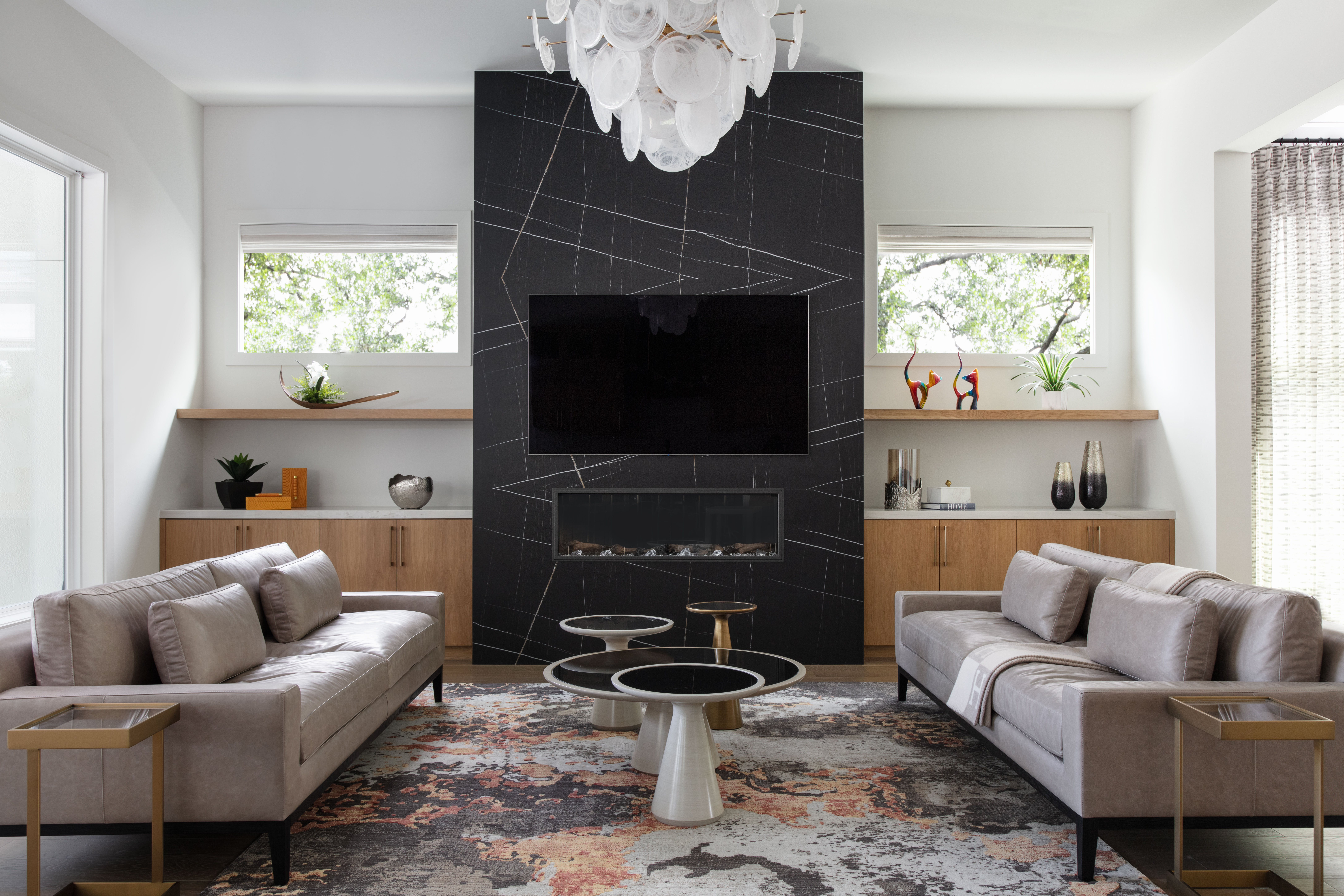
We have used real stone slabs for cladding several times with our clients. When using large slabs of stone, take the opportunity to have the two pieces “book matched.”
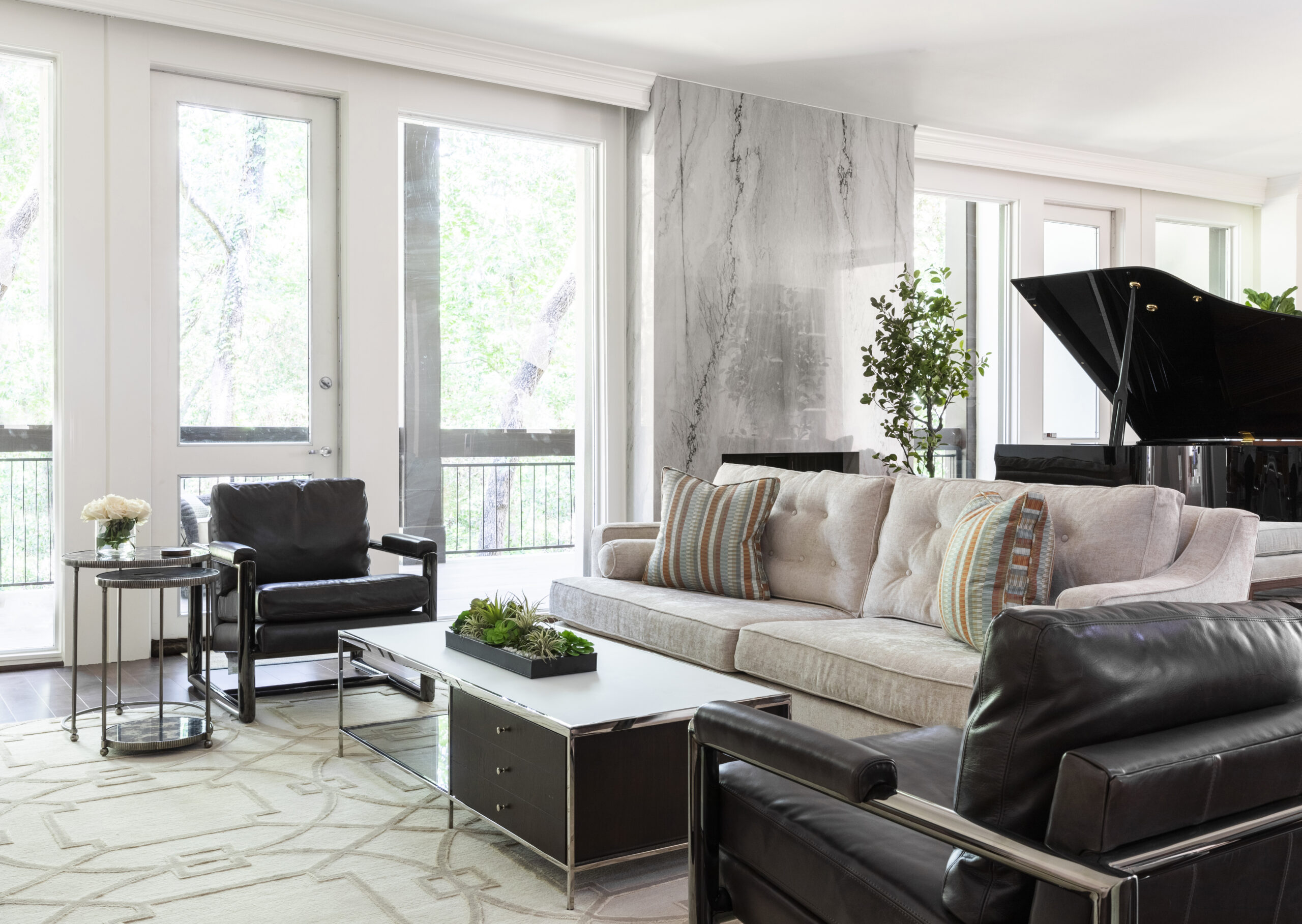
Book Matched Quartzite Fireplace
Book matching creates a symmetrical design, using the veining of the large tiles to look like an “open book.” It is very striking.
4. Millwork
Millwork is woodwork. It encapsulates things like wall and ceiling panels, molding, door finishes, cabinetry, mantels, and more. Millwork can be ready-made from the mills or custom architectural millwork. It can be applied sparingly or as elaborately as you wish.
An Example of Millwork in Houston
One of the millwork projects we have been working on for quite some time is just about to be completed! This house is going to be a stunner, and the millwork that has been created for this home is outstanding. There are decorative crown moldings and a beautifully paneled wall made of walnut with a gorgeous stain. The cabinetry is custom-made, and we cannot wait to photograph this home and show off its beauty! Not only are these upgrades going to be beautiful and aesthetically pleasing, but they will help to increase the value of the home for years to come.
These photos give a little sneak peek of what is to come.
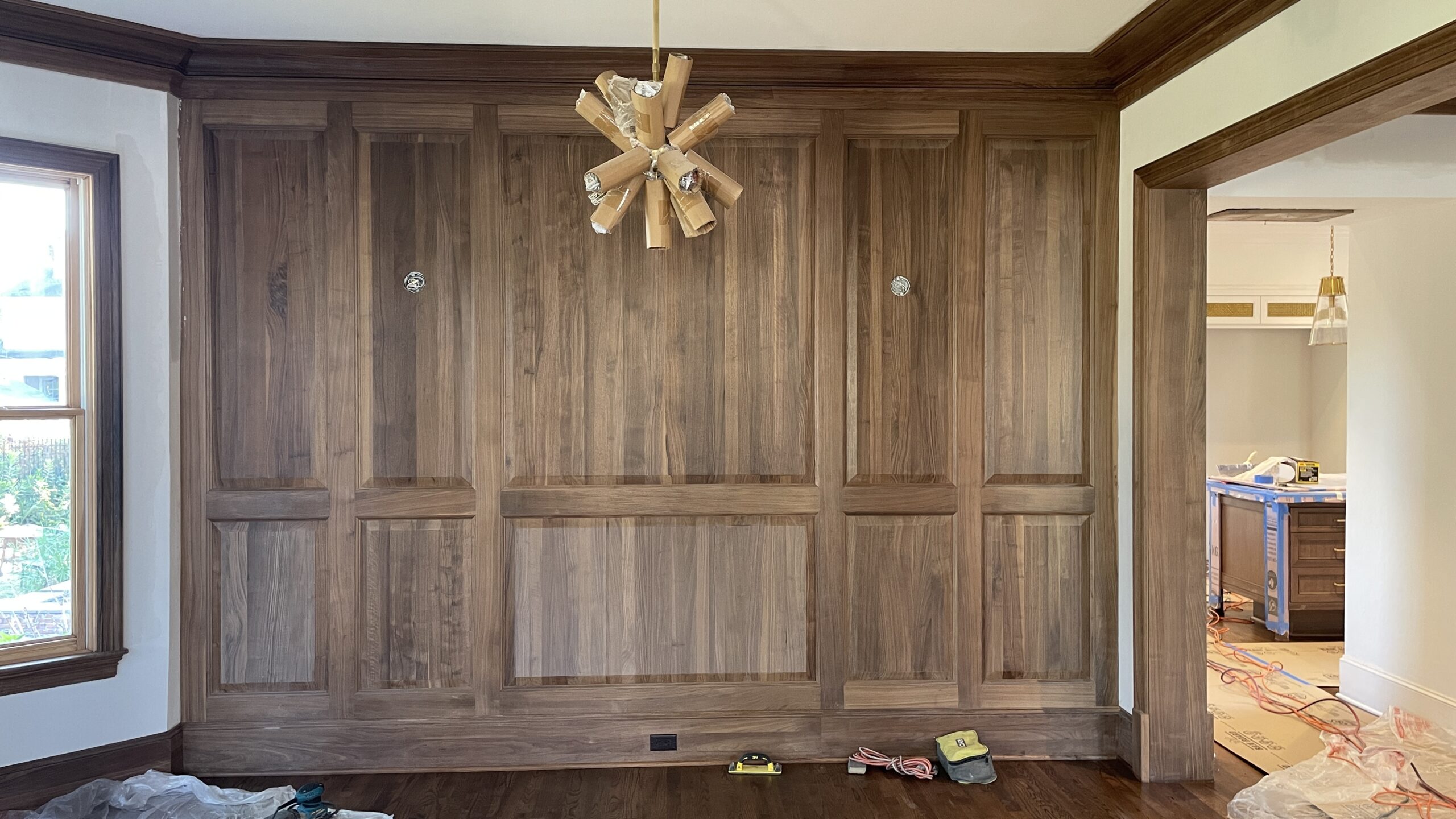
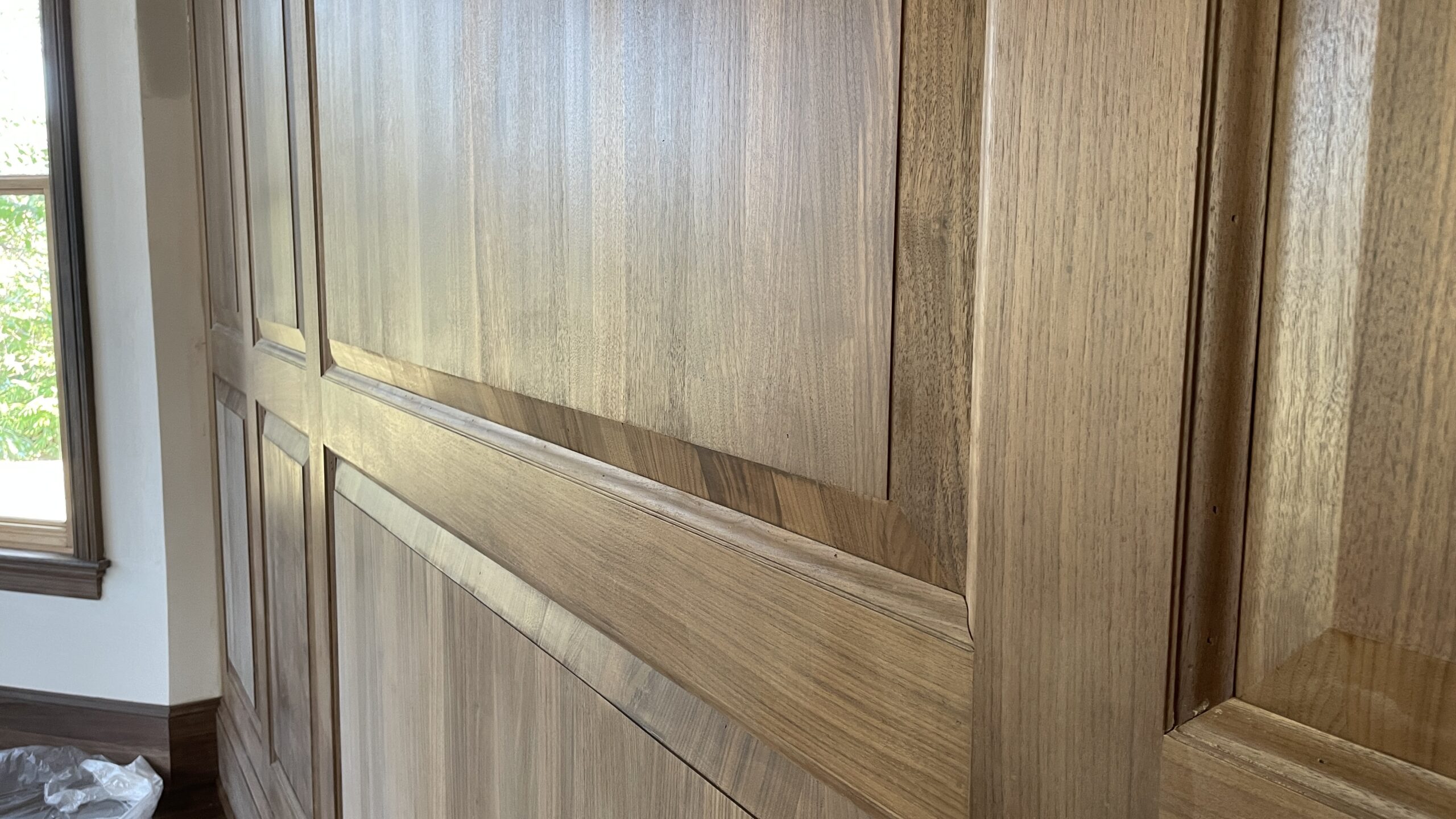
Upgrade Your Walls With Wall Treatments
The next time you are ready to make a change in your home, consider one of the main pillars of your home—your walls. Remember that paint is the easiest way to make an impact for change. Wallpaper provides a multitude of prints and a variety of textures that you can experiment with. Large format tiles, like stone and wood tiles, make cladding the walls extra special.
If you need help with an upcoming design project, give us a call.
Until next time, let your creative juices flow!
-Danna
 Meet Danna, A Luxury Interior Designer in Houston
Meet Danna, A Luxury Interior Designer in Houston
Danna Smith has more than 30 years of experience in the design industry. She has been a buyer and merchandiser for four luxury showrooms in Houston and Dallas. Smith teaches an evening course at Houston Community College to nurture her passion for developing future design stars. Since joining Pamela Hope Designs in 2015, she has worked on some of her most beautiful and innovative projects yet.
